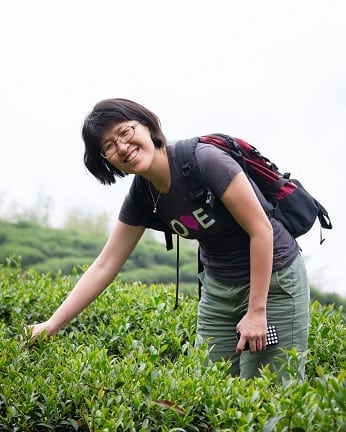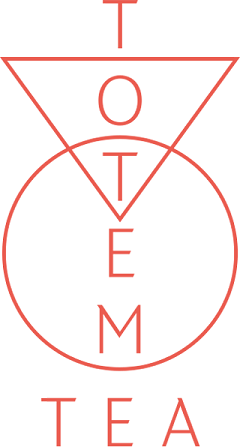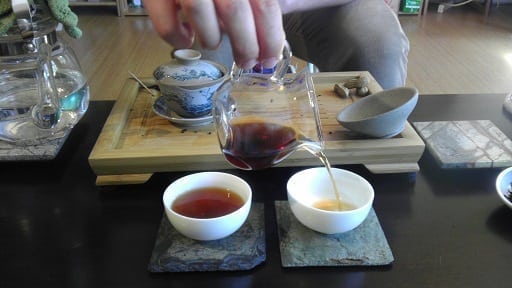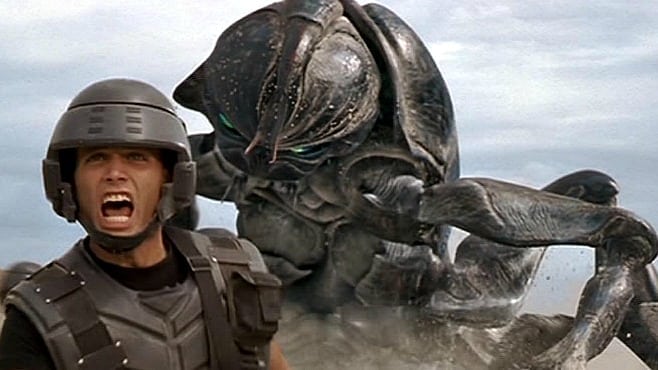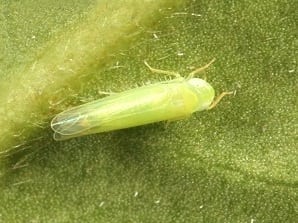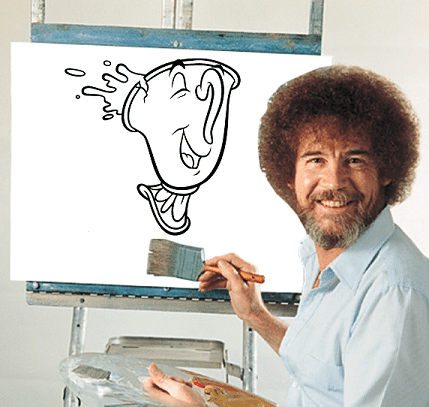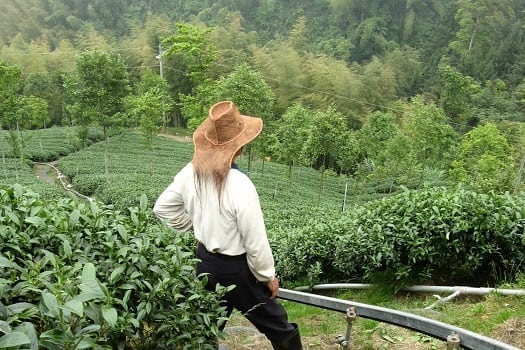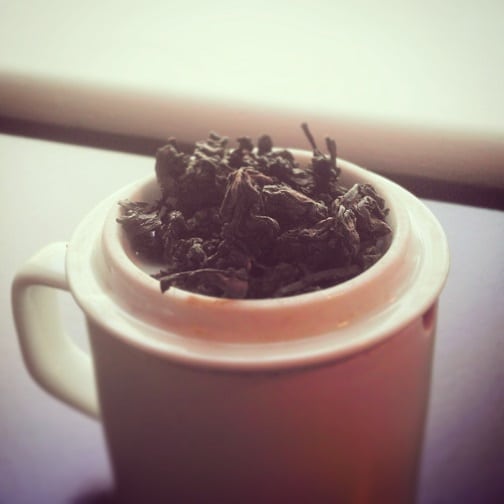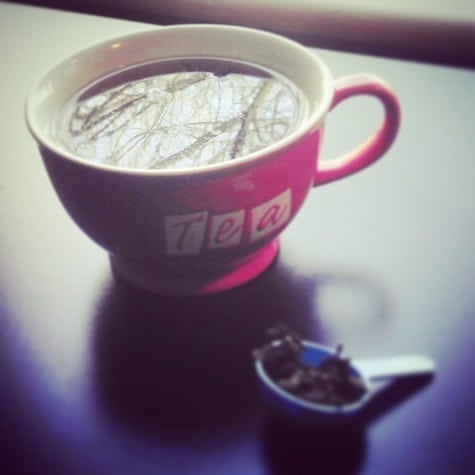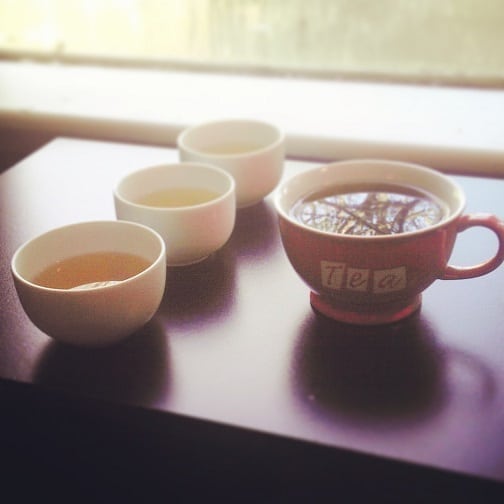The Road Trip Sextet, Part 4 – “An Excellent Different Beach House Tea Party”
For Part 1, go HERE.
For Part 2, go HERE.
For Part 3, go HERE.
I think I mentioned in the prior entry I only allowed myself one day at World Tea Expo this year. It wasn’t for lack of things to do, or desire, but rather a simple matter of timing and priorities. The overall trip had a twofold purpose – one was Expo, but the other was to see family members. As luck would have it, my cousin had a place a mere fifteen-minute drive from Long Beach. I stayed with him the two nights I’d allotted for everything Expo-ish. The second day – effectively the last day of Expo – was spent with him pal-ing around and getting into some sort of well-mannered mischief.
When we rousted, he brewed himself his usual coffee and allowed me to siphon hot water for some Doke Rolling Thunder.

It seemed only fitting that I end my Expo-ish adventure – brief, though it was – with a tea from the Lochan garden. One of the only regrets I had from my Expo brevity was that I didn’t get to talk with Rajiv Lochan more. We only had time for a brief meet-and-greet, totally my fault. However, there was another opportunity to see him, and a bunch of other tea folks, yet I was undecided about it.
So, while the last day of Expo commenced, my cousin and I (and a female friend of his) gallivanted around downtown Orange.

(Yes, there is a city called “Orange” in Orange County. I didn’t know that, either.)
While fellow tea bloggers marveled at the sight of cosplayers from a neighboring Comic Con at the Long Beach Convention Center, our little trio tried on various ancient battle regalia at antique shops.

A fitting parallel.
After a sizable waffle sandwich lunch, though, something tugged at me. I received a few texts and/or tweets regarding a beach house party that night in Long Beach proper. Team Tealet had mentioned they were throwing a “World Tea Expo After-Party” following the major festivi-teas. I caught wind of it when I visited their booth the day prior, but was unsure about my own attendance.
By that afternoon, I had decided.
Team Tealet had rented out a beach house through Airbnb mere minutes drive from the convention center. Several other people had ponied up cash to be a part of the living arrangement – all folks I knew, including the aforementioned Rajiv Lochan. How could I not go?!

Photo by Rajiv Lochan
The only regretful occurrence was Naomi “Joy’s Teaspoon”-‘s early departure. She had to be back home that night, but she did pass on a fond farewell via text. D’awwwww.
I arrived just in time to see Tealet’s Elyse ‘n Mike and a few others (including Tea For Me Please’s Nicole) making a beer run. Naturally, I joined in. Once that trip was done, it was back to the beach house. And I finally got to lounge back and shoot the breeze with RAJIV!!!

No, I can’t say his name without shouting.
In our conversation, I marveled at the fact that he had a Lochan Tea “tea-shirt”. I asked, “How can I get one of those with your face on it?” And he almost – quite literally – gave me the shirt off his back. That’s the kind of guy he is.
Shortly after, I made the acquaintance of one of the members of JoJo Tea – a wholesaler op out of Florida. And…we fist-pumped over our mutual love of Oriental Beauty oolong. Probably the only time a fist-pump was ever naturally-occurring.
As the night progressed, randomness ensued. Adventure Tea’s Alex graced us with his elfin presence. He and Snooty Tea Person’s Natasha carried on a conversation in fluent French, which boggled my mind. Teaity/Tea-Guy Chris and I talked a bit of shop. I was also introduced to World Tea House’s Phil Holman’s among many others. Tealet’s Rie “Oolong City” showed me basic kung fu forms. And throughout, tea and alcohol flowed freely.
The highlight was the true purpose of the party, which was a presentation on Tealet’s latest trip around the world dubbed “The Amazing Tea Race”. One of their more famous stops was the Goe Tea Garden in Nantou County, Taiwan headed by Alfredo Lin.
I have no idea how to express how awesome this guy is, just watch this:
How can one not love a guy that sings to his tea plants?!
The phrase “Excellent Different” became a meme-like catchphrase and has since proliferated into every aspect of tea-related social media.
As an added bonus, samples of Goe’s Zhushan Oolong was served.

It was extremely pleasant – lightly sweet, slightly buttery, and all-around aromatic. A great, greener-style oolong.
Before my inevitable exodus from the party, I was suckered into an unusual experiment. Since I somehow – over the course of the night ended up with a flower pin in my hair, Oolong City Rie felt my “transformation wasn’t complete”…or something. And then broke out her make-up kit. Being two beers and lots of oolong in, I acquiesced to this strange request.
The Great Mississippi Tea Company’s Timothy took over to finish me off.

Wait, that sounded wrong. I mean, he completed the “prettying” with the subtle application of…well…I guess it was guyliner.
The result?

I looked like Eddie Izzard.
Make-up removed, socializing complete, and mildly sobered up, I finally had to take my leave of Chez Tealet. Fond farewells were made, samples were imparted, and I left with a general feeling of bliss. I’ve been to many parties in my time, but I can’t say I was so…in my element as I was with that crowd.
Over a month later, when I brewed up my own stash of Goe oolong, I got a little choked up when I thought about how generally happy I was there.

No other social gathering – save for a precious few – have had that effect on me.
I wonder when I’ll be able to experience even a fraction of that feeling again.

Huh…sooner than I thought.
Continued in Part 5, HERE.
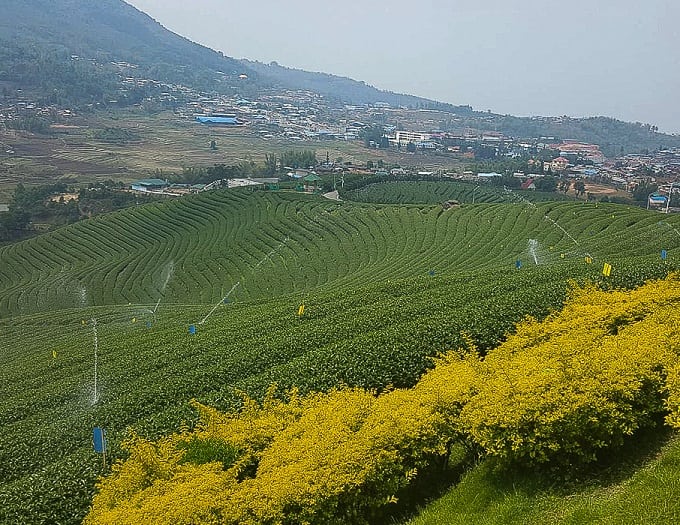

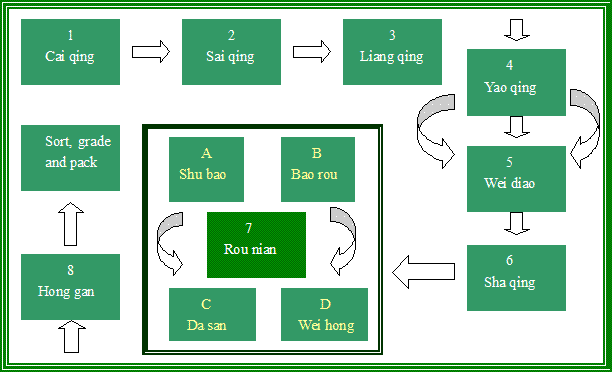
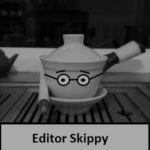 Editor’s Note: The following article is inspired by real events. I say “inspired” because . . . well . . . obviously a lot of it is totally made up. It should be pretty obvious which bits are pure B.S. Anyway, enjoy. (This took weeks to put together.)
Editor’s Note: The following article is inspired by real events. I say “inspired” because . . . well . . . obviously a lot of it is totally made up. It should be pretty obvious which bits are pure B.S. Anyway, enjoy. (This took weeks to put together.)
